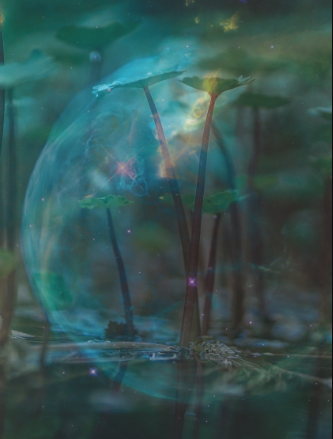WHAT IS BIODYNAMIC GARDENING?
The answer to the question what is biodynamic gardening is quite complex. Biodynamics is a practice of holistic, ecological and ethical gardening practices. Biodynamic gardeners will typically use a biodynamic calendar to plant by and will use 9 preparations made from minerals, herbs and manure which are diluted down to small concentrations and sprayed on the soil and plants.
Related post: Biodynamic Solution Preparation BD500
Biodynamic gardening is based on the philosophies of Rudolf Steiner and is more based in mysticism than solid scientific practices. Biodynamics feels like organic gardening with alchemy, homeopathy and astrology mixed in and is greeted with skepticism by both the scientific and farming communities. Certainly, the making the highly diluted preparations feels like something medieval alchemists might have done stirring the vortex to pull in cosmic forces.
The practice of biodynamics in modern agriculture isn’t for everyone due to the more spiritual and unconventional aspects of biodynamic practices however, biodynamic gardening will resonate with others who may have a deep connection to the land and their agricultural practices.
I myself find that making the biodynamic preparations or compost calms me from the everyday worries of working in a highly regulated environment, the chores around the house, getting groceries and paying the bills. Biodynamic gardening allows me to just be at peace with my little bit of the earth and making the biodynamic preparations is quite meditative after a while watching the sunlight dance and glitter on the water.
Biodynamic gardeners and farmers find that the practice of biodynamic gardening methods produce benefits to the garden or farm like healthier soil, better crops and more vibrant and diverse ecology in and around the garden or farm. Indeed, to be certified to Demeter Biodynamic standards as a biodynamic farm, a portion of the land must be set aside for biodiversity and wildlife habitat.
BIODYNAMIC FARMING
Biodynamic farming involves managing a farm following the principles of a living organism or a wild forest. In a forest system there is a high degree of self-sufficiency; fertility comes from the recycling of the organic material the system generates such as mulch and compost, water is efficiently cycled through the system by the trees and ground cover and balance of species is maintained by intricate predator-prey relationships to keep pests in check.
Some of the biodynamic gardening and farming principles work beautifully with permaculture in terms of self sustaining systems, composting, animal management to avoid over grazing and degradation of the land and encouraging biodiversity to the land and integrated pest management.
STARTING SEEDS BIODYNAMICALLY
I have already started sowing seeds biodynamically in the greenhouse by following the biodynamic calendar. You can watch a bit about what I did in the video below:
Typically, I will spray the potting soil with valerian, yarrow or chamomile biodynamic preparations 507, 502 or 503 then horn manure biodynamic preparation 500 before sowing but did not for this first set of seeds but for the actual experiment I will be.
The purpose of using the preparations is to stimulate the soil and seeds into growing and utilizing available nutrients in the soil.
BIODYNAMIC GARDENING EXPERIMENT
There are a few trials and experiments going on in my garden and homestead in 2018 but the biodynamic gardening experiment is the biggest and will span a few seasons in particular in the permaculture areas of the homestead.
It isn’t going to stand up to scientific scrutiny, plants on the edge will also perform differently to those in the center of a plot, the constraints on space mean that there may be some carry over of the biodynamic sprays or compost to the conventional, organic plants and I’m not a fan on monoculture crops (growing all the same species plants together); it’s like a set of neon Vegas lights pointing at your crop advertising them for business to every pest out there 24 hours a day so they know exactly where to go to screw them up for you.
My plan is to grow a few different types of plants in different locations in the garden. The first plants up for the experiment properly are onions. Six varieties of onions to be precise:
- Cabernet (F1 hybrid)
- Valencia
- Walla Walla
- Stuttgarter
- Wethersfield Red
- Noordhollandse Bloedrode Onion
These will be grown in the area which used to be the compost pile so there has not been anything other than compost and grass on the area previously. You can watch the short video about the onion biodynamic gardening experiment here:
The area itself will have sunflowers growing against the fence and carrots dividing the groups on onions. Herbs such as basil and cilantro will be growing around the edge of the test plot area. The diagram below shows the proposed test plan site for the onions.
Other crops to be part of the biodynamic experiment include:
- Sunflowers, Mammoth
- Cabbage
- Squash
- Beans
The varieties and planting locations for the cabbage, beans and squash are to be determined depending on the seeds available and how the garden plan can be modified.
HOW WILL I COMPARE RESULTS?
I’ll be looking for overall plant vigor and appearance as well as the resistance to any pests, diseases and weather changes.
Yield is going to be the main driver of this trial for the onions, cabbage, beans and squash. For the sunflowers, I’m looking for height and flower head size.
FORGING PATHS TO NEW AGRICULTURE
In addition to the small garden experiments with biodynamic gardening I will be trying my hand at incorporating biodynamics with permaculture into my backyard orchard. Although it doesn’t look like much now, the changes will be huge in 2018.
I was recently sent some seeds by my good friend and YouTuber Ryan from A Little Dirt Never Hurt and I’m keen to use them in my permaculture designs and see how they respond to growing biodynamically. Some of the seeds included:
- Skullcap
- Blackeye susan
- Purple kale
- Mammoth sweet peas
- April in Paris sweet peas
- Passionflower
- Sheep sorrel
- Primadonna echinacea
- Evening primrose
There are many flowers, herbs and medicinal plant seeds which are readily available that work well in small scale permaculture and food forest gardening. From a biodynamic gardening perspective, herbs, bareroot fruit trees
and flowers are easily planted according to the biodynamic calendar
. Permaculture food forests and other permaculture designs can be cultivated and tended to following biodynamic principles.
So far, I have already planted and sown quince, apple
and huckleberry seeds
according to biodynamic gardening methods along with chilies, peppers and tomatoes, so far they are looking promising! I have tomato and chili seeds which have sprouted in 6 days!
Both permaculture and biodynamic gardening encourage wildlife and biodiversity into the area making both gardening methods ideal to merge.
Before planting in the permaculture areas, the soil will be treated with the biodynamic preparations of valerian, chamomile or yarrow followed by horn manure.
If you liked this post please take a moment to share it using the share buttons below or pin the image below to Pinterest and save it for later.
https://misfitgardening.com/my-biodynamic-gardening-experiment/













